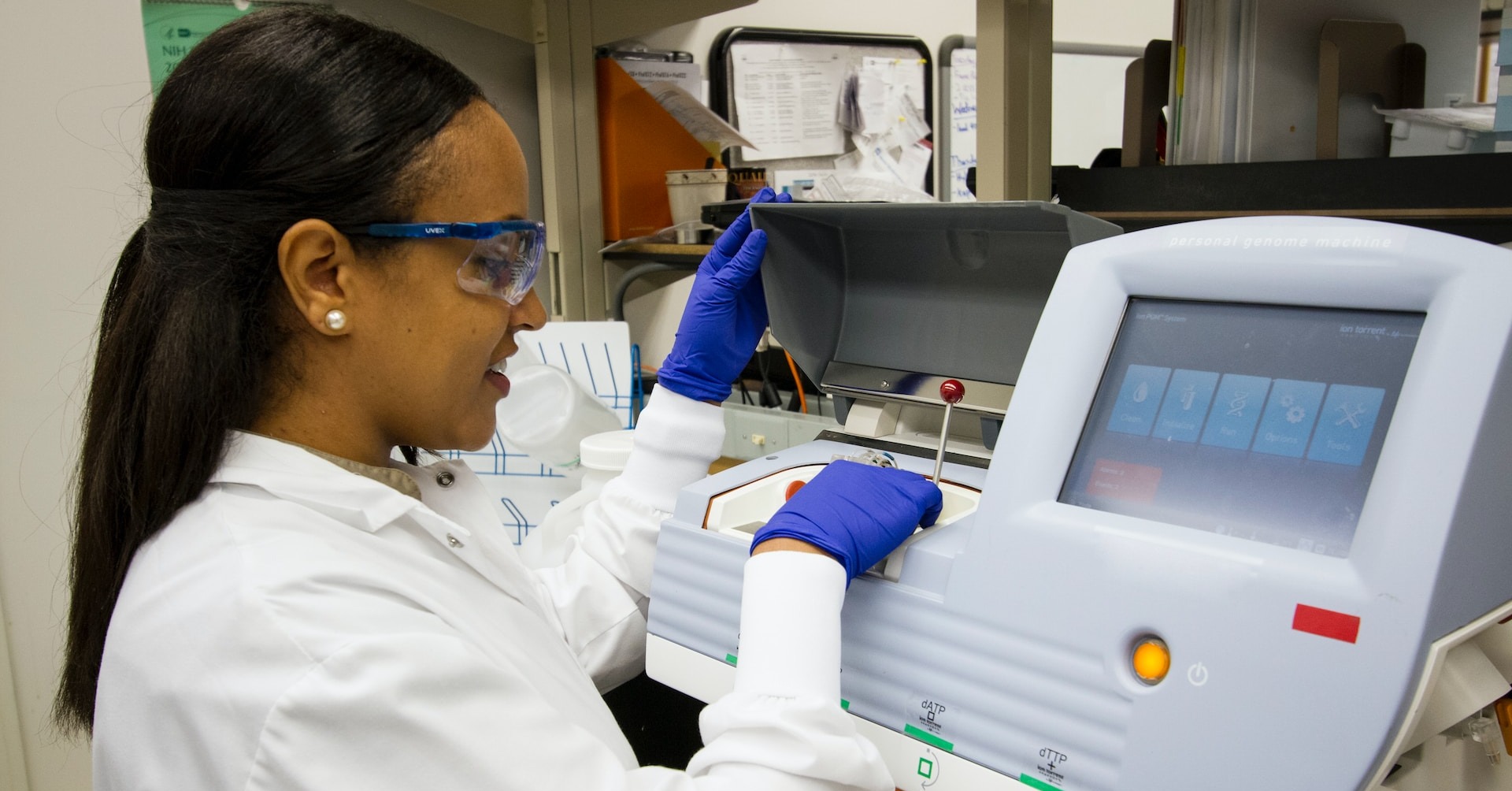
Where Do Epidemiologists Work?
Epidemiologists work in many settings, including hospitals, universities, and federal, [...]

All occupational therapists (OTs or OTRs—the “r” stands for “registered”) help people learn or relearn the everyday motor skills they need to manage their lives after an illness or injury. They also work with people with physical disabilities and neurological impairments.
It sounds like a relatively straightforward job, but in fact, it can be extraordinarily complex and demanding work. Daily tasks that most of us can easily check off our to-do lists involve multiple motor processes and skills, from sensory input processing to bilateral coordination to motor planning. Even something as simple as cracking an egg actually involves moving through numerous steps that can be extremely challenging for someone with neurological or physical differences.
OTs are trained to help patients of all ages and abilities perform daily tasks, improve their motor skills, learn self-regulation, and gain independence—all of which can lead to higher self-esteem and better mental health. Occupational therapists work in:
Patients can benefit from occupational therapy immediately after surgery, an injury, or a neurological event such as a stroke. On-site OT experts help patients regain movement, balance, and strength in the effort to transition them out of the hospital.
Physical therapy and occupational therapy support those living and developing independence at a long-term care facility. OT specialists may assist those with cognitive, neurological, or muscular challenges when handling the extended effects of aging or illness.
After an injury or neurological event, patients can slowly regain their everyday mobility by regularly visiting an OT specialist at a local clinic.
Those with more severe physical challenges may require inpatient time in a rehab center. They may regularly meet with an OT expert to treat specific challenges, such as communication, using their hands, or walking.
Educational OT therapists can help young students with speech, writing, physical activity, and concentration. These specialists may work in the classroom or to build programs on an administrative level.
Some OTs are generalists. Others work primarily with specific patient populations (there are geriatric occupational therapists and pediatric occupational therapists, for example) or specialize in issues related to certain areas of the body, like the hands or brain. Occupational therapists need to know a lot about anatomy, neurology, psychology, and how small tasks can be broken down into even smaller ones.
If you’re thinking about launching a career in occupational therapy, be aware that in 2020, you can still become an occupational therapist with a master’s degree—specifically, a Master of Occupational Therapy (MOT). However, it’s likely that the minimum entry-level degree for occupational therapists will eventually become the Doctor of Occupational Therapy (OTD).
Some aspiring occupational therapists and working OTs are deciding to earn an OTD now because this degree can open up additional career paths in teaching, research, and leadership, and lead to new opportunities in nonclinical and clinical settings. Before you enroll in an MOT program, you should look into whether going straight into a doctoral-level degree program makes more sense.
In this article, we answer the question what is a Doctor of Occupational Therapy degree? by discussing the following:
The Doctor of Occupational Therapy is a practice-oriented professional degree designed for both aspiring clinicians and OTs already working in the field. In the program notes on its website, the University of Pittsburgh identifies the OTD as a degree for those who want to “help individuals to function in self-care, home management, school, work, and play/leisure occupations to establish a lifestyle that is optimally independent, productive, and satisfying to the individual.”
Like occupational therapy master’s programs, Doctor of Occupational Therapy degree programs teach advanced clinical practice skills, OT theory, administrative skills, research methodologies, and program development. This is a terminal degree, and students graduate from OTD programs with the highest-possible level of clinical and administrative knowledge. Some students enroll in Doctor of Occupational Therapy degree programs because they want to become specialty area experts. There are OTD programs in which students choose concentrations or tracks like:
Doctorate programs significantly increase a graduate’s ability to tackle ongoing research in OT and related fields. Graduates may choose to transition directly to a university, nonprofit, or private research facility.
Health professions in the driving and community field help patients get back behind the wheel in a safe setting. Professionals focus on the visual, motor, and spatial requirements for traveling outside the home, either by car or public transportation.
When paralysis and neurological events interrupt the upper and mid-section of the body, OT can help a patient regain the ability to hold utensils, and chew and swallow food.
OT specialists can help a client modify their home to avoid injury and to simplify everyday tasks for a higher quality of life and lower pain level.
Doctoral students focus on the older population and the unique challenges that come with common injuries and illnesses at this stage of life.
When neurological interruptions affect the hands, a patient loses the majority of their ability to complete daily tasks like writing, typing, eating, and getting around the house. OT experts can specifically study the link between the hands and the mind for this highly focused therapy.
Occupational therapists will help those with vision impairments modify their daily activities, redesign their living space, and move safely with the help of different instruments and exercises.
Doctoral students may choose to broaden their mental health counseling skills to help clients through the psychological challenges of losing mobility and chronic pain.
A focus on mobility OT supports everything from daily tasks like getting dressed to learning how to maneuver a wheelchair.
A department of occupational therapy may offer a specific track in OT and children. Students will study the unique effects of OT during this developmental phase of life.
This generalized track focuses on moving from injury or illness to a more independent and mobile lifestyle through standard OT practices.
Therapists may choose to take an administrative and management career path, assisting government organizations and nonprofits regulate how OT is used in hospitals, schools, and rehab centers.
Pediatric OT experts can study specific therapies offered in schools, from speech to reading and writing. Graduates may also choose to focus on the administrative side of OT in public and private educational settings.
Many aspiring OTs earn bachelor’s degrees in biology, kinesiology, psychology, or sociology. There are pre-OT programs at schools like The University of Texas at Austin and the University of Colorado Boulder. Some OTD programs accept students right out of bachelor’s degree programs. Others require that applicants have master’s degrees in occupational therapy, a license to practice, and professional experience (more on this below).
While there are Doctor of Occupational Therapy degree programs that accept students who have undergraduate degrees or master’s degrees in subjects unrelated to occupational therapy, making it into one of these without any prior experience in occupational therapy or healthcare is tough. There are often hundreds of applicants vying for just a handful of spots in graduate-level occupational therapy programs—many of whom have previous healthcare experience. You can boost your chances of getting accepted to an OTD program by:
Many students choose to be trained in CPR/AED (Cardiopulmonary resuscitation/automated external defibrillator) and concussion care, as well as take the national certification examination.
For example, many professionals join the American Occupational Therapy Association for resources, support, and community.
If an applicant has minimal professional experience, shadowing a certified OT expert can both boost their resume and provide opportunities for letters of recommendation.
While some schools will allow students to catch up with required physiology, biology, and industry-specific courses, completing these before submitting an application indicates a dedication to the program.
Many students enhance their experience in the field by volunteering or interning in occupational therapy settings during their undergrad years.
There are two types of Doctor of Occupational Therapy degree programs: the entry-level OTD program, and the post-professional OTD program. Currently, the entry-level education required to earn OT state licensure is the MOT. With a master’s degree, you can sit for the American Occupational Therapy Association (AOTA) National Board for Certification in Occupational Therapy exams (information about the NBCOT certification examination is available online). If you pass, you may start working with patients.
Until fairly recently, most doctoral degree programs for OTs were post-professional programs designed for students with master’s degrees. Students were already licensed to practice and had at least three years of experience working in clinical settings; they sought further training and/or higher-level certifications.
Now, some schools have created online and on-campus entry-level academic programs at the doctoral-level equivalent to Master of Occupational Therapy programs (i.e., they prepare students to become licensed occupational therapists). These programs take longer to complete than MOT programs, however, because they also dig into topics customarily covered by the post-professional Doctor of Occupational Therapy degree curriculum.
The coursework in most Doctor of Occupational Therapy degree programs covers a lot of ground. Students take core classes in clinical methods, as well as program development and evaluation, medical practice management, applied research, leadership, and even culture and diversity. At the University of Pittsburgh, the three-year, nine-term entry-level OTD curriculum includes courses like:
This course focuses on adjusting daily activities for the patient’s specific physical needs and living space. Students will explore ways to support both professional and leisure activities within the structure of health mobility.
This high-level course applies OT concepts to practical labs and real-life scenarios with patients, and will prepare students for fieldwork and capstone research.
Doctoral candidates explore OT-related government policies and organizations advocating for those with physical and neurological differences.
This course moves through each area of the body to learn the interconnectedness of systems and how this relates to strength, mobility, and balance.
In addition to the clinical practice itself, students must be able to meld the data with a valuable conclusion—a key factor to a student’s graduation rate and career path.
This course provides a foundation of modern OT theories, treatments, and technology used to advance a patient’s healing process and quality of life.
Students have the opportunity to understand their work within the historical context of the field, exploring modern research, ethics, and philosophies behind the practice.
Professionals must be able to quantitatively measure both the starting point and progress of a client as they advance through the OT program.
Doctoral graduates will have ample opportunities to train, lead, and manage others in the field after the program. Many universities add business and management courses to develop the necessary leadership skills to guide an OT team.
Students study the business and regulatory practice of running a private or public OT clinic. The course may also explore managing and training employees, financial matters, and daily challenges.
This interdisciplinary course links changes in the brain to a range of behaviors, mobility, and cognitive differences.
This curriculum covers the area of gerontology and specific OT practices for the aging community. Productive aging theory specifically studies how to encourage older individuals to remain physically and emotionally engaged in their communities.
Students learn to understand their specific therapies within the context of the national health system, touching on topics like insurance, rehabilitation centers, and hospital care.
This course specifically focuses on clients with social or learning differences and methods that OT can help them thrive in their communities.
Students can dive more deeply into specific OT therapies, such as environmental alterations, gait training, and rehabilitation after a neurological event.
In some OTD degree programs, students devote some credit hours to electives related to a concentration in addition to core courses. These curricula allow students to create an individualized plan of study focused on a specialty area.
Every doctoral program has some form of clinical practicum or field experience requirement in addition to capstone or thesis courses. That’s because AOTA requires that students complete a minimum of 24 weeks of full-time supervised fieldwork in a variety of settings.
For instance, at the University of Pittsburgh, occupational therapy students in their third year of studies spend less time in the classroom and more time on level-i and level-ii fieldwork, experiential learning projects, professional development, and clinical experiences. Students in post-professional programs can often complete clinical practicum and field experience requirements at their current OT practices. In entry-level programs, students usually find clinical residency placements with the help of faculty advisors.
Most Doctor of Occupational Therapy degree programs require students to complete anywhere from 35 credit hours of work in post-professional programs to 100+ credit hours of work in entry-level programs. Post-professional OTD programs often can be completed in two years by full-time students who are already licensed occupational therapy practitioners, while entry-level Doctor of Occupational Therapy programs might take three or more years to complete. There also are part-time OTD programs, which may take longer to finish.
OTD programs don’t cost more than other types of doctorate programs. At the low end, Occupational Therapy Doctorate degree programs cost about $40,000. At the upper end, programs cost over $100,000. As is often the case with graduate degree programs, in-state tuition at state universities can be significantly less expensive than tuition for nonresidents. At the University of Toledo, for example, tuition for a single semester (including fees) is about $9,500 for Ohio residents, but $14,500 for out-of-state students.
There are fewer than 40 entry-level AOTA-accredited Doctor of Occupational Therapy degrees in the United States. The list of post-professional OTD programs recognized by AOTA is quite a bit longer. You can check the accreditation status of any program at the ACOTE website.
According to US News and World Report, the best occupational therapy programs are found at:
Boston University offers both an entry-level DOT and a post-professional degree offered online. The program has been ranked as the top OT school in America by US World News and World Report.
Choose from a research-focused PhD program or an entry-level occupational therapy doctorate degree and work with some of the industry’s top experts in the field. CSU boasts that the programs offer level-i and level-ii fieldwork, small classes, and teaching assistantships.
Prospective students with at least a bachelor’s degree can apply to the Thomas Jefferson University entry-level OTD. The school has between an 88% and 100% graduation rate and can be completed in about three years.
Tuft’s entry-level program is ideal for those with an undergraduate degree outside of the occupational field looking to become experts in the industry. The program requires nine terms with either a full-time or part-time schedule.
The University of Illinois has won several awards for its occupational therapy programs, including ranking as the number-one master’s program at a public university. Students can choose from either an entry-level degree for those transitioning into the field or a post-professional doctorate for certified practitioners.
Pitt offers ample student research opportunities as well as a range of degrees in the OT field, from post-professional degrees to a PhD in rehabilitation science. The program has nearly a 100% graduation rate and ranked third in the country by US World News and World Report.
USC is known for having established one of the first OT graduate programs in the country. Students can choose from three doctorate-level degrees and develop their research skill at their well-funded, on-site research clinic.
OTD students at Washington University complete 106 credits over three years, including six months of fieldwork and a 14-week capstone project. Candidates also have access to the school’s OT clinic that serves the local community.
The answer to this question depends on whether a student is pursuing an entry-level OTD or a post-professional OTD. In the clinical world, an entry-level OTD has approximately the same value as an MOT. Students emerge from these programs with the same clinical skills and are prepared to take the occupational licensing exam and work with patients.
Some people argue that until new degree requirements for occupational therapists go into effect, it makes more sense for aspiring OTs to earn the MOT because it’s the quicker route to licensure. On the other hand, given that the educational requirements to become an occupational therapist may change in less than a decade, others contend that the OTD is the better choice because it offers additional research and clinical experience. That’s what drove
Dominic Lloyd-Randolfi to choose the entry-level OTD over the MOT. “I know there are a lot of fluff words to describe the benefits of the OTD, but for the most part, they are true,” is how he put it on the CovalentCareers blog. “I feel that I have a really good understanding of policy, regulations, and the larger forces at play affecting occupational therapy services.”
The fact that some OTD programs are already deemed ‘entry-level’ is confusing. The Accreditation Council for Occupational Therapy Education (ACOTE) has considered mandating that all entry-level occupational therapy programs transition to the doctoral level many times over the past two decades, but has never conclusively adopted the OTD as the official entry-level degree for occupational therapists. It came close in 2017 and then again in 2018, but in 2019, the organization’s Representative Assembly voted in favor of dual degree levels. Given how many times ACOTE has reviewed this decision, it’s likely that it will revisit the question of dual-degrees.
MOT programs tend to be less expensive than OTD programs. You may be able to complete a master’s degree program in less time. And, there are more colleges and universities with MOT programs than there are with entry-level OTDs. On the other hand, if you’re already working as an OT, earning a Doctorate of Occupational Therapy can help you transition out of clinical care into higher-paying administrative roles, research positions, and program development jobs.
At the end of the day, determining the market value of a degree in this field is complicated. Choosing a clinical doctorate program over an MOT program won’t make you a better OT, and given that doctorates aren’t yet required in this field, it’s unlikely that employers will expect you to have one. Years after you graduate, demonstrated competence will become much more important than the degree on your resume.
However, there are specific settings and positions in which OTD holders are more likely to be hired, which often pay more… and it may not be long before the OTD becomes the standard entry-level degree. Only you can decide whether you have the stamina and the resources necessary to take on an extra year of school in pursuit of a terminal degree in OT.
Questions or feedback? Email editor@noodle.com

Epidemiologists work in many settings, including hospitals, universities, and federal, [...]

In the occupational therapy field, a doctorate can open doors [...]

Genetic counseling is a career that combines science and sensitivity,especially [...]

Not everyone in a hospital wears scrubs. Some, like hospital [...]

Neuro-optometrists use neurology and optometry to understand vision and its [...]
Categorized as: Occupational & Behavioral Therapy, Nursing & Healthcare